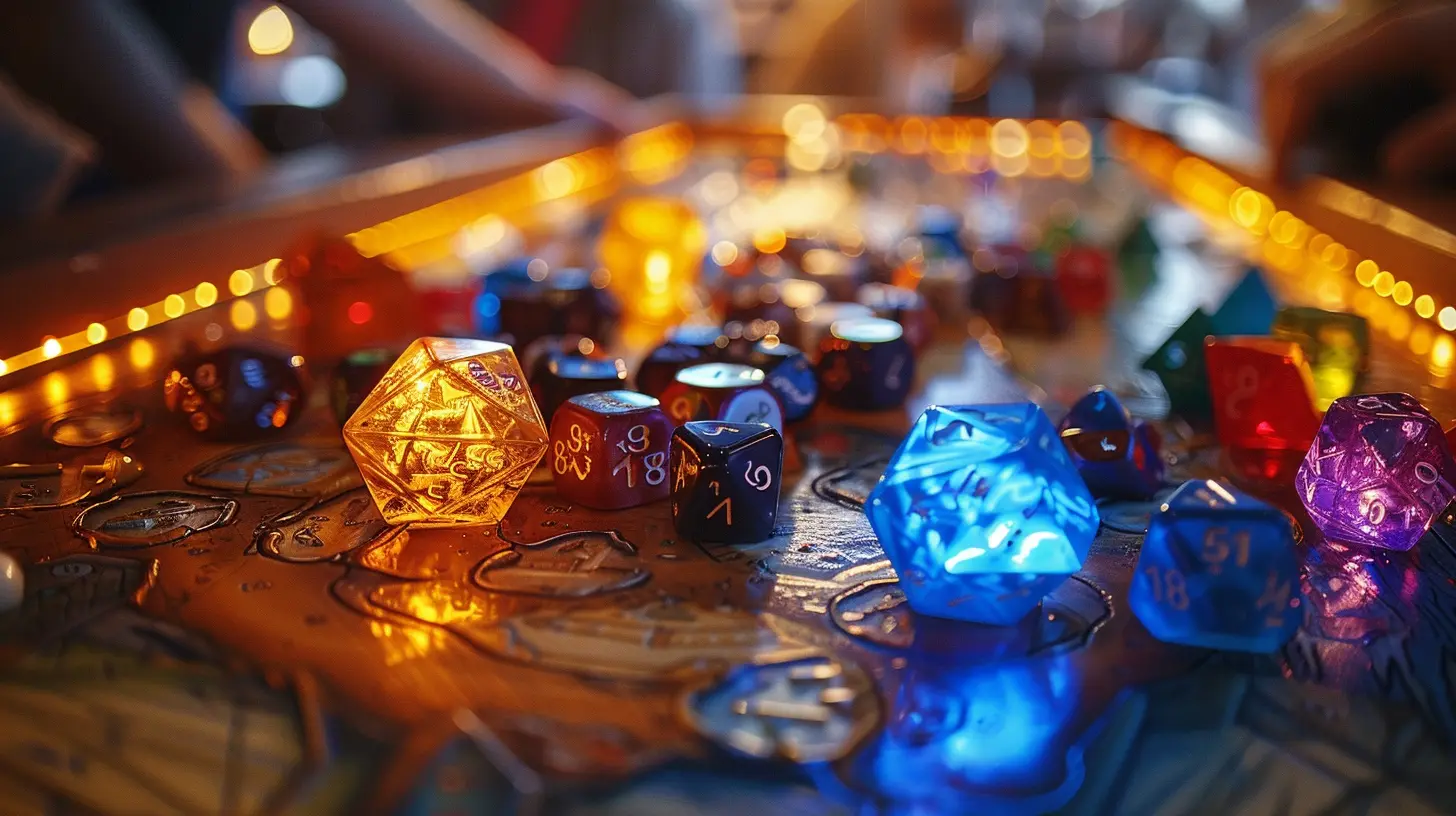How to Teach Complicated Board Games to New Players
10 October 2025
Let's face it, teaching complicated board games to new players can feel like trying to explain quantum physics to someone who just learned what atoms are—it’s challenging, often frustrating, but oh-so-rewarding when it all clicks. Whether you’re introducing your friends to a heavy strategy game like Twilight Imperium or a beautifully complex eurogame like Gloomhaven, the process doesn’t have to be overwhelming. Trust me, with the tips I’m about to share, you’ll have your players engaged and ready to dive into the game with excitement rather than confusion.
So grab your rulebook, pull up a chair, and let me guide you through how to make complicated board games easy and fun to teach.
1. Know the Game Like the Back of Your Hand
Before you even think about teaching, you need to be confident in your own understanding of the game. If you're fumbling through the rulebook in the middle of your "lesson," your players will lose interest faster than you can say "Victory Points."Take the time to play the game solo first (if possible), or at least read the rulebook thoroughly. Watch a tutorial video if that helps you visualize how the mechanics work. The goal is to feel comfortable enough that you can explain the game without constantly flipping pages to confirm every detail.
Think about it this way: If you were teaching someone to drive, you wouldn’t be learning the rules of the road at the same time, right? Preparation is key.
2. Set the Stage Before You Start
Imagine walking into a movie halfway through—it’s disorienting, right? That’s how new players feel when they’re thrown into a board game without context. Before you explain a single rule, give your group a brief overview of the game. Talk about:- The theme: What’s the story or setting? Pirates, space exploration, zombie apocalypse?
- The objective: What’s the end goal? Are they trying to collect the most points, defeat a boss, or survive until the end?
- The gameplay style: Is this game competitive, cooperative, or semi-cooperative? Should they expect long-term strategy or quick, tactical decisions?
A simple, high-level explanation of what they’re about to experience sets the stage and gets players invested right off the bat.
3. Focus on the Big Picture First
Here’s a mistake I’ve made more times than I’d like to admit: diving straight into nitty-gritty mechanics without explaining how the game flows as a whole. It’s like giving someone random puzzle pieces without showing them the finished picture.Start with the big picture. Walk your players through the overall structure of the game—what a typical turn looks like, how rounds progress, and how the game ends. Once they understand the framework, you can fill in the details step by step.
For example, if you’re teaching a game like Terraforming Mars, you might say:
“This is a game about turning Mars into a livable planet. You’ll take turns playing cards, managing resources, and increasing Mars’ temperature, oxygen levels, and oceans. The game ends when all three of these are maxed out, and whoever has the most points wins.”
Simple, right? Once they get the general idea, you can dive into specifics.
4. Break It Down Into Smaller Chunks
Teaching an intricate game all at once is like trying to eat a seven-layer cake in one bite. Instead, break the explanation into bite-sized pieces, focusing on one concept at a time.Here’s a step-by-step approach that works wonders:
1. Start with player actions: What can players do on their turn, and how do those actions move the game forward?
2. Introduce resources or currencies: If the game involves resources (money, energy, cards, etc.), explain how they’re earned and used.
3. Cover scoring last: Players don’t need to know every detail about scoring right away. Once they’ve got the basics, introduce how points are earned so they can start strategizing.
Remember: It’s okay if they don’t understand everything immediately. They’ll pick up on nuances as they play.
5. Use Examples and Analogies
Game mechanics can seem abstract and intimidating, so make the rules relatable by using analogies or real-world examples. Think about how the mechanics mimic real-life situations and highlight that connection.For instance, if you’re teaching a game like Wingspan, you could say:
“Think of it like managing a bird sanctuary. You’re collecting birds, laying eggs, and gathering food to grow your population. Your goal is to create the most impressive sanctuary by scoring points for the birds you’ve attracted.”
By framing mechanics this way, you’re not just explaining rules—you’re weaving a little story. And let’s be real, who doesn’t love a good story?
6. Set Up the Game Before Explaining
There’s nothing more soul-crushing than sitting through 30 minutes of rule explanations only to wait another 10 minutes for the game to be set up. Do yourself (and your players) a favor—set up the board, cards, tokens, and other components before you start explaining.A ready-to-go game makes your explanation feel more interactive. As you talk, you can point to different components, show examples, and maybe even play out a couple of sample turns. Seeing the game “in action” helps players connect the dots much faster.
7. Let Them Learn by Doing
You know what they say—experience is the best teacher. As tempting as it might be to explain every single rule upfront, let your players start playing sooner rather than later.You can try a “practice round” where you walk everyone through a few turns without any pressure to win. They’ll get hands-on experience with the mechanics, and you can clarify anything that’s confusing as you go. Plus, it’s way more engaging than sitting through a lecture.
Think of it like learning how to ride a bike—it’s all about trial and error. The same goes for board games.
8. Be Patient and Encouraging
Okay, I’ll admit it—teaching a complex board game can test your patience, especially if someone keeps asking the same questions. But trust me, a little kindness goes a long way.Remember, this is all new to them, and it’s normal to feel overwhelmed at first. If a player isn’t grasping a concept, try rephrasing your explanation or demonstrating it in play. And always celebrate their “aha!” moments—it’s those little victories that make learning fun.
And hey, if someone makes a mistake during the game? No big deal. Correct them gently and move on. This isn’t the World Board Gaming Championship—it’s game night with friends!
9. Don’t Be a Rules Lawyer
Let’s be honest: nobody likes a rules lawyer. If a minor rule gets misinterpreted during your first playthrough, don’t stress over it. Focus on keeping the game flowing and fun. You can always tweak things in future games once everyone’s more familiar with how it works.At the end of the day, the goal is to enjoy the experience. If bending a rule here or there makes the game more accessible for new players, go for it.
10. Recap at Key Moments
A quick recap mid-game can be a lifesaver. Take a moment between rounds or phases to summarize what just happened and what comes next. It’s a great way to reinforce rules and keep everyone on the same page.For example, in a game like Scythe, you might say:
“Okay, that ends the production phase. Now we’re moving into the action phase, where you can move your workers, build structures, or deploy your mechs.”
Short and sweet, but oh-so-helpful.
11. Encourage Questions
Last, but definitely not least, create a judgment-free zone for questions. Encourage your players to speak up if they’re confused or need clarification. It’s better to address misunderstandings early on than to let them spiral into frustration later.And if you don’t know the answer to a question? No worries! Check the rulebook or look it up online. Even the most experienced gamers have to double-check things sometimes.
Final Thoughts
Teaching complicated board games to new players doesn't have to be a Herculean task. With a little preparation, a sprinkle of patience, and a dash of storytelling flair, you can make even the most intricate games approachable and fun. Just remember to focus on the big picture, break things down into manageable chunks, and let your players learn by doing.At the end of the day, it’s not just about the game—it’s about sharing an experience with friends and creating memories together. So take a deep breath, gather your crew, and dive into that next gaming adventure. You’ve got this!
all images in this post were generated using AI tools
Category:
Tabletop GamesAuthor:

Stephanie Abbott
Discussion
rate this article
1 comments
Thomas McQuiston
This article beautifully captures the essence of sharing the joy of board games. Your tips are not just helpful but inspire patience and enthusiasm in teaching new players. Thank you!
October 11, 2025 at 3:47 AM

Stephanie Abbott
Thank you so much for your kind words! I'm thrilled to hear that you found the tips helpful and inspiring. Happy gaming!


